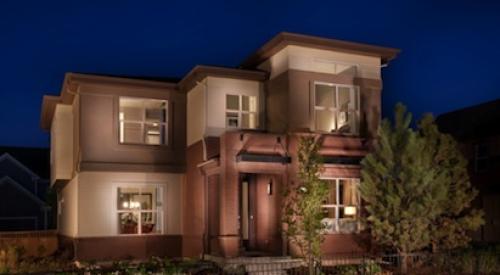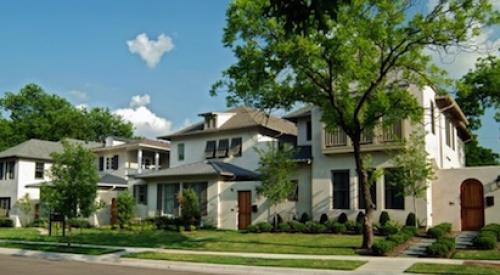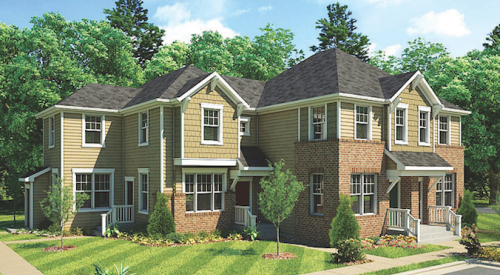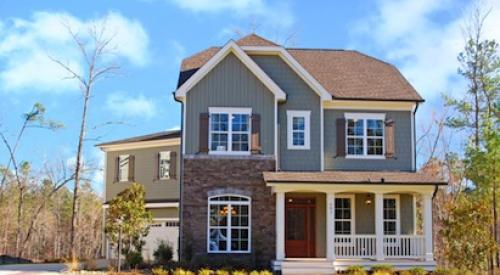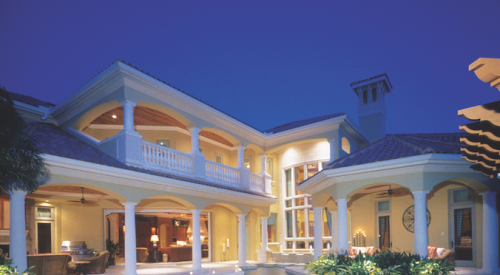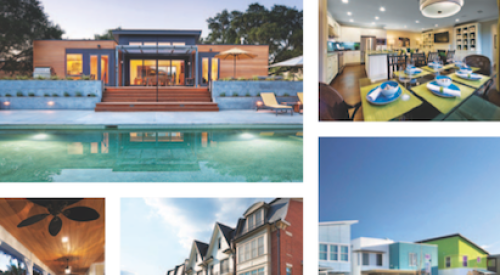1. Market-rate rental apartment homes
In today’s recovering economy, market-rate rental apartment homes may be the only housing option for many families. Therefore, these rental homes should feature warm exterior architecture, three or four bedrooms, lofts for home offices, elevators, garages, lodges instead of clubhouses, and a concierge in lieu of a leasing agent. It’s a whole new game with a whole new set of players for this market segment, and accommodating family life is absolutely critical.

2. Duplex cottage student housing
Student housing at universities across the U.S. is changing. Universities are allowing private-sector builders to provide the student housing on or near campus so they can concentrate on their core business — educating our youth. Parents are looking for safe, convenient, cost-effective solutions, and these duplex cottage homes with separate garages are a great solution.

3. ‘Smart sized’ multi-family housing
Multi-family homes (four-plex, six-plex, and more) that are “smart sized” and designed in the modern vernacular are in demand. What do I mean by smart sized? The home should be long on savvy design but short on price — both initially and over the life of the house. The marketability of the modern vernacular has been gaining strength during the past several years, and as the market emerges buyers are going to want something fresh and clean.


4. Multi-generational living solutions
Since 1990, the number of multi-generational households has grown approximately 40 percent. There are now some 50 million Americans (almost 17 percent of the population) living in multi-generational households across the U.S. And for some, the trend isn’t about the economy at all — it’s about family. With retiring grandparents as the first generation, dual-income working parents as the second generation, and a resurgence of households with three, four, and even five kids, what better solution for everyone both financially and emotionally.

5. Style savvy 'gen now' bungalow
As children of the Zoomers, this generation was raised on technology and the Internet, with the home being the center of their world. They are comfortable at home with a plethora of interests and a spirit of adventure. Their numbers are staggering, with 4.5 million reaching age 22 this year. Many are buying homes in this market with the assistance of their parents, who recognize the deals available. Some yearn for authentic architectural detailing of a bygone era, while others demand the clean, simple lines of the modern vernacular.

6. Pocket neighborhoods
Creating a sense of neighborhood within our communities has long been the goal, but achieving it has been difficult. The concept of smaller neighborhoods with pocket parks that serve fewer individual homes is an integral part of the solution.

The neighborhoods within the overall community get broken down into smaller clusters of homes or families, no different than where and how many of us grew up.

7. Factory-built and pre-cast attainable housing
The demand for attainable workforce housing is being met utilizing alternative construction methods such as factory-built and pre-cast concrete. The challenge of attainable housing is to provide thoughtfully designed, family friendly homes that are simple in form, while still creating an attractive architectural statement. An attention to sustainable design, as well as repeatability is also imperative.

8. Senior rental
The keys to a successful senior rental community are location, safety, affordability, and style. For seniors, proximity to the workforce housing of their family members, as well as their necessary services, including churches and shopping, is imperative. For safety, these apartment homes are arranged in a spoke design around a completely secure courtyard featuring mature landscaping, fountains, and outdoor gathering areas for residents to mingle outside their apartment homes. Simple pre-cast construction with metal roofs speaks to the affordability, while the bright resort colors and mature vegetation create a stylish environment.

9. Live/work and mixed use
According to the American Institute of Architects' Home Design Trends Survey, consumer preferences are now leaning toward mixed-use infill development rather than conventional suburban single-family housing. Typically, the ground floor is retail with housing and office space above; often utilized as infill in urban redevelopment areas near public transportation (TOD) and commercial infrastructure.

10. Amenities - wellness center
Gone are the days of the large social clubhouse being the sole amenity in a community. Say hello to the lifestyle centers with an emphasis on the lifestyle, health, and wellness of the residents. The most important room in the lifestyle center will be the workout room with all of the exercise equipment and a view of the lap and exercise pool beyond.
ABOUT THE AUTHOR

Donald F. Evans, AIA, NCARB
The Evans Group
Arhitecture Planning Interiors
www.theevansgroup.com
devans@theevansgroup.com

